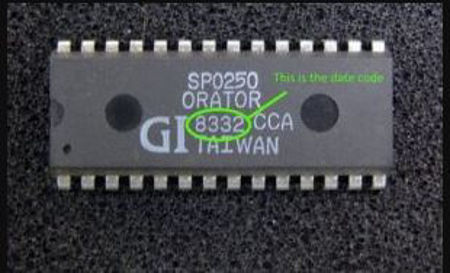While the electronic component industry has a uniform date code methodology, it has caused problems in many cases and in others is a good indicator for the literal “shelf life” of the parts.
The date codes are generally in four digit codes. The first two numbers cover the year and the second two are for the week they were manufactured. So the example below shows the four numbers 8332 - made in 1983 in the 32nd week of that year.

Prior to the 1980s, the effect of time was much greater on electronic components. The biggest issue was solderability and the development of “tin whiskers” and the industry saw the lifespan of a component at about 2 years. But moving forward from the 80s, new materials were used that had a much longer shelf life. Early components used metals that rusted or corroded and were much more impacted by moisture and dust.
There are a number of other factors that date codes help with such as:
-
Component traceability
-
Shipping date verification
-
Validity of returns
-
Product change notifications
-
Defect Recalls
-
FIFO inventory management
The date codes are also useful when a component’s manufacturing method has changed slightly but maintains its SKU or serial number. That way the date code lets you know which inventory is older and differently made.
The date codes are also used when a company is looking for consistency in a manufacture. If all the components have the same date, then all the products built with them will have consistency - managing the product changes is consolidated.
The ECIA is looking to change the 2-year expiration date standard as it is a holdover from the 1940s and much has changed in the materials used and how components are stored.
contact us:
 EN
EN
 English
English
 Chinese
Chinese
 Italiano
Italiano
 Portuguese
Portuguese
 Deutschland
Deutschland
 French
French
 Russian
Russian
 Japanese
Japanese
 Turkish
Turkish
 Korean
Korean
 Spanish
Spanish
 my account & orders
my account & orders

